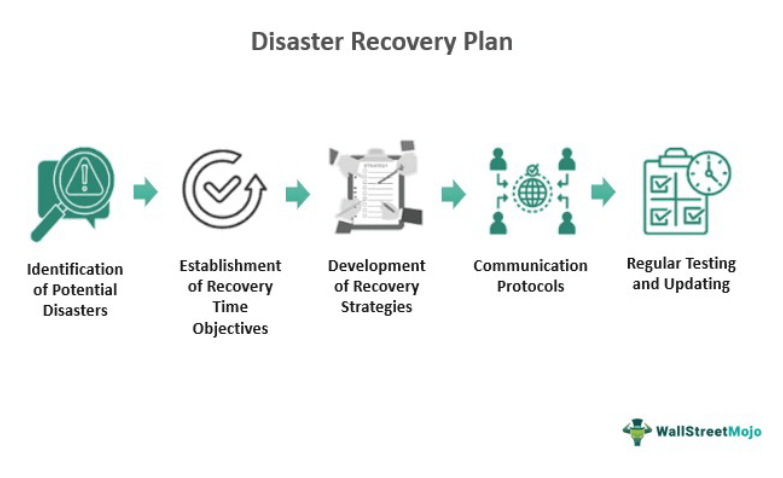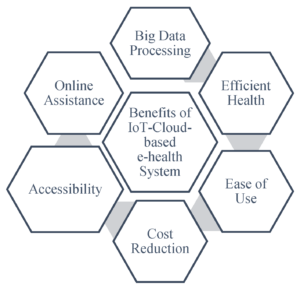Cloud disaster recovery planning and implementation is a crucial aspect of any business’s IT strategy. With the increasing reliance on cloud technology, organizations need to ensure that they have a robust and effective plan in place to recover from any unforeseen disasters that may occur. In this blog article, we will delve into the intricacies of cloud disaster recovery planning and implementation, providing you with the knowledge and insights you need to create a resilient and efficient disaster recovery strategy.
Understanding Cloud Disaster Recovery
Cloud disaster recovery refers to the process of ensuring that critical data, applications, and systems can be recovered and restored in the event of a disaster or disruption. In today’s digital landscape, where businesses heavily rely on cloud infrastructure, having a well-defined disaster recovery plan is essential for minimizing downtime, safeguarding data, and maintaining business continuity.
The Importance of Cloud Disaster Recovery
Organizations face various potential disasters, such as natural calamities, cyber-attacks, hardware failures, and human errors. Without a comprehensive disaster recovery plan, these events can lead to significant data loss, prolonged downtime, and financial losses. Cloud disaster recovery helps mitigate these risks by providing a scalable, cost-effective, and reliable solution for data backup, replication, and recovery.
Key Components of a Cloud Disaster Recovery Plan
A well-structured cloud disaster recovery plan comprises several essential components, each contributing to the overall effectiveness of the strategy. These components include:
- Business Impact Analysis (BIA): Conducting a thorough assessment of the potential impact of a disaster on various business operations, systems, and processes.
- Risk Assessment: Identifying and evaluating potential risks and vulnerabilities that could lead to a disaster or disrupt business operations.
- Recovery Time Objective (RTO) and Recovery Point Objective (RPO): Establishing acceptable timeframes for recovery and determining the maximum acceptable amount of data loss.
- Data Backup and Replication: Implementing a backup and replication strategy to ensure data redundancy and availability in the event of a disaster.
- Disaster Recovery Testing: Regularly testing the recovery plan to validate its effectiveness, identify gaps, and make necessary improvements.
- Communication and Incident Response: Establishing clear communication channels and incident response protocols to ensure a coordinated and timely response during a disaster.
Steps in Cloud Disaster Recovery Implementation
Implementing a cloud disaster recovery plan involves a series of well-defined steps to ensure an efficient and seamless recovery process. These steps include:
- Identify Critical Assets: Determine the key assets, systems, and applications that are critical for business operations and prioritize their recovery.
- Select a Cloud Disaster Recovery Provider: Evaluate and choose a reputable and reliable cloud disaster recovery provider that aligns with your business requirements.
- Define Recovery Objectives: Establish recovery time objectives (RTO) and recovery point objectives (RPO) based on the criticality of your assets and regulatory requirements.
- Design Disaster Recovery Architecture: Develop a robust architecture that ensures data replication, failover mechanisms, and network connectivity for seamless recovery.
- Implement Data Backup and Replication: Set up regular backup schedules and implement data replication mechanisms to ensure redundancy and availability of critical data.
- Test and Validate the Recovery Plan: Conduct regular testing and validation exercises to ensure the effectiveness of the recovery plan and identify any gaps or areas for improvement.
- Educate and Train Staff: Provide training and educational programs to your staff to ensure they are familiar with the recovery procedures and can respond effectively during a disaster.
- Monitor and Maintain the Recovery Solution: Continuously monitor the performance of the recovery solution, perform regular maintenance, and update the plan as needed.
Assessing Business Continuity Requirements
Before diving into the planning and implementation process, it is essential to assess your organization’s business continuity requirements. This assessment will help you understand the critical assets, evaluate risks, and establish recovery objectives that align with your business goals.
Identifying Critical Assets
The first step in assessing business continuity requirements is to identify the critical assets that are crucial for your business operations. These assets can include customer data, financial information, customer-facing applications, internal communication systems, and more. By understanding the importance and priority of each asset, you can allocate appropriate resources and efforts for their recovery.
Evaluating Risks and Vulnerabilities
Assessing risks and vulnerabilities is crucial for understanding the potential threats that could lead to a disaster or disruption. Conduct a comprehensive risk assessment to identify internal and external risks, such as natural disasters, cyber-attacks, hardware failures, power outages, and human errors. This evaluation will help you prioritize your disaster recovery efforts and allocate resources accordingly.
Establishing Recovery Objectives
Recovery time objectives (RTO) and recovery point objectives (RPO) are critical metrics that define your organization’s tolerance for downtime and data loss. RTO specifies the maximum acceptable time for recovering systems and applications after a disaster, while RPO defines the maximum acceptable amount of data loss measured in time. By establishing clear recovery objectives, you can align your disaster recovery plan with your business requirements and regulatory obligations.
Selecting Cloud Disaster Recovery Solutions
Choosing the right cloud disaster recovery solution is pivotal to the success of your recovery plan. There are several factors to consider when selecting a solution, including reliability, scalability, cost-effectiveness, and compatibility with your existing infrastructure.
Types of Cloud Disaster Recovery Solutions
Cloud disaster recovery solutions can be broadly categorized into three types:
- Backup and Restore: This solution involves regularly backing up critical data and restoring it in the event of a disaster. It provides an affordable and straightforward approach for disaster recovery but may involve longer recovery times.
- Replication: Replication solutions involve continuously replicating data from the primary site to a secondary site in real-time. This allows for faster recovery and minimal data loss but may incur additional costs for maintaining the secondary site.
- Failover: Failover solutions involve maintaining active copies of critical systems and applications in real-time, allowing for seamless failover to the secondary site during a disaster. This provides the fastest recovery with minimal downtime but is usually more expensive due to the need for constant synchronization.
Factors to Consider when Selecting a Provider
When choosing a cloud disaster recovery provider, consider the following factors:
- Reliability and Uptime: Ensure that the provider has a proven track record of reliability and minimal downtime to ensure your data and systems will be available when needed.
- Scalability: Assess the provider’s ability to accommodate your organization’s growth and evolving disaster recovery needs without compromising performance.
- Cost-effectiveness: Evaluate the pricing structure of the provider to ensure that it aligns with your budget and offers the best value for your investment.
- Compatibility and Integration: Consider how well the provider’s solution integrates with your existing infrastructure and applications to ensure a seamless implementation process.
- Support and SLAs: Look for providers that offer excellent customer support, service level agreements (SLAs), and 24/7 monitoring to ensure prompt assistance during a disaster.
Designing a Robust Disaster Recovery Architecture
Building a robust disaster recovery architecture is crucial for ensuring seamless recovery in the event of a disaster. This architecture should incorporate elements like data replication, failover mechanisms, and network connectivity to ensure business continuity and minimal downtime.
Data Replication Strategies
Data replication is a key component of disaster recovery architecture that ensures redundancy and availability of critical data. There are various data replication strategies to consider:
- Synchronous Replication: In synchronous replication, data is simultaneously written to both the primary and secondary sites, ensuring real-time data consistency. However, it can introduce latency and performance overhead.
- Asynchronous Replication: Asynchronous replication involves periodically copying data from the primary site to the secondary site. It offers lower latency but may result in some data loss during a disaster.
- Snapshot-based Replication: This strategy involves taking regular snapshots of the primary data and replicating these snapshots to the secondary site. It offers flexibility in terms of recovery points but may require more storage space.
Failover Mechanisms
Failover mechanisms play a critical role in disaster recovery architecture by ensuring seamless transition to the secondary site during a disaster. Common failover mechanisms include:
- Active/Passive Failover: In an active/passive failover setup, the secondary site remains passiveand only becomes active when the primary site experiences a failure. This setup ensures that critical systems and applications are always available, but it may result in some downtime during the failover process.
- Active/Active Failover: In an active/active failover setup, both the primary and secondary sites are actively running and serving traffic. This setup provides immediate failover without downtime but requires careful load balancing and synchronization between the sites.
- Load Balancing: Load balancing distributes incoming traffic across multiple servers or sites to ensure optimal performance and maximize availability. It can be combined with failover mechanisms to enhance both performance and resilience.
Network Connectivity
Establishing reliable and secure network connectivity between the primary and secondary sites is crucial for efficient disaster recovery. Consider the following factors when designing network connectivity:
- Bandwidth: Ensure that your network connection has sufficient bandwidth to handle the replication and failover traffic without performance degradation.
- Redundancy: Implement redundant network connections to minimize the risk of connectivity failures and ensure continuous data replication and failover.
- Security: Implement robust security measures, such as encryption and secure VPN connections, to protect the data during replication and failover.
- Latency: Minimize network latency between the primary and secondary sites to ensure efficient data replication and failover.
Implementing Disaster Recovery Processes and Procedures
Once you have designed a robust disaster recovery architecture, it is essential to implement the necessary processes and procedures to ensure a smooth recovery process during a disaster.
Setting up Backup Schedules
Establishing regular backup schedules is crucial for maintaining up-to-date copies of critical data. Determine the frequency at which backups should occur based on the RPO established during the assessment phase. Automate the backup process to ensure consistency and reliability.
Testing Recovery Plans
Regularly testing and validating your recovery plans is essential to ensure their effectiveness and identify any gaps or areas for improvement. Conduct simulated disaster scenarios and test the recovery process to validate the RTO and RPO objectives. Document and analyze the results of these tests to refine and enhance your recovery plans.
Establishing Communication Protocols
During a disaster, effective communication is crucial for coordinating the response efforts and keeping stakeholders informed. Establish clear communication protocols, including designated channels and contact information for key personnel. Ensure that these protocols are regularly reviewed and updated as needed.
Training Staff for Disaster Recovery
Educating and training your staff on disaster recovery procedures is essential for ensuring a coordinated and effective response during a crisis. Provide training sessions and workshops to familiarize employees with the recovery processes, their roles and responsibilities, and the communication protocols. Conduct regular drills and tabletop exercises to reinforce the training and enhance preparedness.
Documenting and Updating Procedures
Documenting all the disaster recovery processes and procedures is crucial for easy reference and future updates. Maintain detailed documentation of backup schedules, recovery steps, communication protocols, and staff responsibilities. Regularly review and update this documentation to reflect any changes in your infrastructure or business requirements.
Ensuring Data Security and Compliance
Data security and compliance are paramount when it comes to disaster recovery. Protecting sensitive data during replication, storage, and recovery is essential for maintaining customer trust and complying with regulatory requirements.
Implementing Encryption
Encrypting your data during replication and storage adds an extra layer of security and ensures that even if the data falls into the wrong hands, it remains unreadable. Implement strong encryption algorithms and key management practices to safeguard your data.
Access Controls and Authentication
Enforce strict access controls and authentication mechanisms to ensure that only authorized individuals can access and manage the disaster recovery systems. Implement multi-factor authentication, role-based access control, and regular access reviews to mitigate the risk of unauthorized access.
Data Privacy Considerations
When designing your disaster recovery strategy, consider data privacy regulations and ensure compliance with applicable laws. Depending on your industry and geographic location, you may need to implement additional safeguards and privacy measures to protect sensitive customer information.
Compliance Audits and Reporting
Regularly conduct compliance audits to ensure that your disaster recovery processes and procedures align with industry standards and regulatory requirements. Maintain proper documentation of these audits and be prepared to provide reports and evidence of compliance when necessary.
Data Retention and Destruction Policies
Establish clear data retention and destruction policies to ensure that data is retained only for as long as necessary and securely disposed of when no longer needed. Adhere to legal and regulatory requirements regarding data retention and disposal to avoid potential compliance issues.
Monitoring and Maintaining Disaster Recovery Solutions
Disaster recovery is an ongoing process that requires regular monitoring and maintenance to ensure the effectiveness and reliability of the solution.
Proactive Monitoring
Implement a proactive monitoring system to continuously monitor the health and performance of your disaster recovery systems. Regularly review logs, alerts, and performance metrics to identify any potential issues and address them before they impact the recovery process.
Performance Tuning
Periodically assess the performance of your disaster recovery solution and identify areas for optimization. Fine-tune the system configuration, network settings, and resource allocation to ensure optimal performance during a recovery scenario.
Periodic Testing and Validation
Regularly test and validate your disaster recovery solution to ensure its effectiveness and identify any gaps or areas for improvement. Conduct scheduled tests and drills to simulate various disaster scenarios and verify the recovery process. Analyze the results and update your recovery plan accordingly.
Backup and Recovery Audits
Perform regular audits of your backup and recovery processes to ensure that all critical data and systems are appropriately backed up and can be restored successfully. Verify the integrity of backup files and test the recovery process to ensure data availability and accuracy.
Reviewing and Updating the Recovery Plan
Regularly review and update your disaster recovery plan to reflect changes in your infrastructure, business objectives, and regulatory requirements. Keep track of lessons learned from past incidents and incorporate them into your plan to enhance its effectiveness.
Training and Education for Disaster Recovery Preparedness
Preparing your staff for potential disasters is essential for a successful recovery. By providing training and education programs, you can enhance their preparedness and ensure a coordinated response during a crisis.
Disaster Recovery Training Programs
Develop comprehensive training programs that cover various aspects of disaster recovery, including the recovery process, communication protocols, staff roles and responsibilities, and incident response. Conduct regular training sessions to keep employees informed and prepared.
Tabletop Exercises and Simulations
Conduct tabletop exercises and simulations to simulate different disaster scenarios and test the response capabilities of your staff. These exercises help identify gaps in knowledge, communication, and coordination, allowing you to address them proactively.
Knowledge Sharing and Documentation
Encourage knowledge sharing among your staff by documenting lessons learned from past incidents and sharing best practices. Maintain a knowledge base or a central repository where employees can access relevant documentation and resources related to disaster recovery.
Regular Review and Updates
Regularly review and update your training and education programs to incorporate new technologies, industry best practices, and lessons learned from real-world incidents. Stay abreast of emerging threats and trends to ensure that your staff remains prepared for potential disasters.
Evaluating and Improving Disaster Recovery Plans
Regular evaluation and improvement of your disaster recovery plans are crucial to adapt to changing business needs and technological advancements. By continually assessing the effectiveness of your plans, you can identify areas for improvement and ensure the resilience of your recovery strategy.
Key Metrics for Evaluation
Define key metrics to measure the effectiveness of your disaster recovery plans. These metrics can include recovery time, data loss, success rate of recovery tests, and customer satisfaction. Regularly track and analyze these metrics to identify trends and areas for improvement.
Continuous Improvement Process
Establish a continuous improvement process for your disaster recovery plans. This process involves regularly reviewing and updating your plans based on changing business requirements, technological advancements, and lessons learned from past incidents. Encourage feedback from stakeholders and implement a feedback loop to ensure ongoing improvement.
Benchmarking and Best Practices
Benchmark your disaster recovery plans against industry best practices and standards. Stay informed about the latest advancements in disaster recovery technology and methodologies to ensure that your plans remain up to date and aligned with industry standards.
Regular Communication and Collaboration
Regularly communicate with key stakeholders, including IT teams, business leaders, and external partners, to gather feedback and insights. Foster a collaborative environment where feedback and suggestions are welcomed and incorporated into the improvement process.
Periodic External Audits
Consider engaging external auditors or consultants to conduct periodic audits of your disaster recovery plans. These audits provide an unbiased assessment of your preparedness and highlight areas for improvement that may have been overlooked internally.
CostOptimization in Cloud Disaster Recovery
Cost optimization is a critical aspect of any IT strategy, including disaster recovery. By optimizing costs, organizations can ensure that their disaster recovery solution is both efficient and cost-effective without compromising reliability and effectiveness.
Right-Sizing Resources
Assess the resource requirements of your disaster recovery solution and right-size them to align with your actual needs. Avoid overprovisioning resources, as it can lead to unnecessary costs. Regularly monitor resource utilization and make adjustments as needed to optimize costs.
Choosing Cost-Effective Providers
Compare pricing models and offerings from different cloud disaster recovery providers to identify the most cost-effective option. Consider factors such as storage costs, data transfer fees, and additional services provided. Look for providers that offer flexible pricing options and scalability to align with your budget and evolving needs.
Implementing Data Deduplication and Compression
Data deduplication and compression technologies can significantly reduce storage costs in disaster recovery solutions. These techniques eliminate redundant data and compress data to optimize storage utilization. Implementing these technologies can result in cost savings while still maintaining data integrity and availability.
Automation and Orchestration
Automate and orchestrate as many processes as possible within your disaster recovery solution. Automation reduces the need for manual intervention, streamlines operations, and minimizes the risk of errors. By automating routine tasks, you can save time and reduce operational costs.
Leveraging Cloud Resource Pools
Consider leveraging cloud resource pools to optimize costs in disaster recovery. Resource pools allow you to share resources across multiple systems or applications, maximizing resource utilization and reducing overall costs. By pooling resources, you can achieve better economies of scale and cost efficiency.
Implementing Tiered Storage
Implement tiered storage solutions in your disaster recovery strategy to optimize costs. Differentiate between frequently accessed and less frequently accessed data and store them in appropriate storage tiers. Frequently accessed data can be stored in faster but more expensive storage, while less frequently accessed data can be stored in lower-cost storage options.
Regular Cost Analysis and Optimization
Continuously analyze your disaster recovery costs and identify areas for optimization. Regularly review usage patterns, resource utilization, and pricing structures to identify cost-saving opportunities. Work closely with your disaster recovery provider to explore cost optimization strategies and take advantage of any cost-saving programs or discounts.
Periodic Review of Service Level Agreements (SLAs)
Review your disaster recovery service level agreements (SLAs) periodically to ensure that you are only paying for the level of service you actually need. Assess the recovery time objectives (RTO) and recovery point objectives (RPO) defined in the SLAs and adjust them if they no longer align with your business requirements. This can help optimize costs while still meeting your recovery objectives.
Regular Capacity Planning
Perform regular capacity planning to ensure that your disaster recovery solution can accommodate your evolving needs without unnecessary costs. Monitor resource utilization, storage requirements, and network bandwidth to identify potential bottlenecks or areas of underutilization. Based on this analysis, make informed decisions about resource allocation and scaling.
Continuous Monitoring and Optimization
Implement continuous monitoring and optimization practices to ensure ongoing cost optimization in your disaster recovery solution. Regularly analyze usage patterns, performance metrics, and cost data to identify any anomalies or areas for improvement. Stay proactive and make adjustments as needed to optimize costs while maintaining the desired level of resilience.
Cloud disaster recovery planning and implementation require careful consideration of various factors to ensure a resilient and cost-effective solution. By following the comprehensive guide provided in this article, organizations can create a robust and efficient disaster recovery plan that ensures minimal downtime, maximum data protection, and optimal cost efficiency. Stay prepared, stay resilient!



